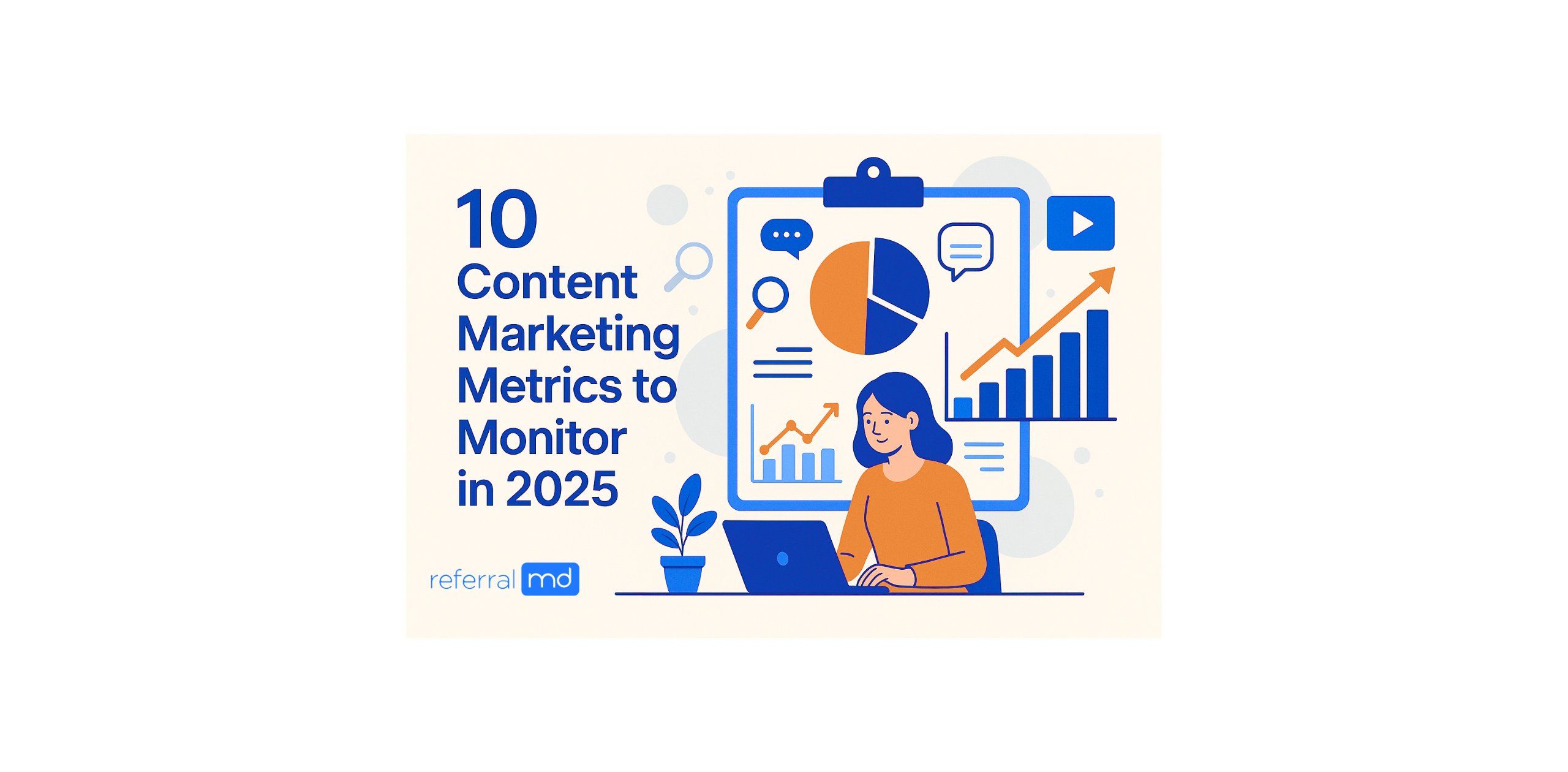How to Grow Your Medical Practice with Technology: Essential Marketing Tools for 2025
Growing a successful medical practice in today’s digital landscape requires more than excellent patient care—it demands strategic use of technology to enhance patient experience and attract new patients. Whether you’re a solo practitioner or managing a multi-physician practice, leveraging the right healthcare marketing tools can significantly accelerate your growth.

Photo by geralt on Pixabay
Why Technology Matters for Healthcare Marketing
The modern patient expects convenience, accessibility, and seamless communication. Technology bridges the gap between your excellent care and patient expectations, helping you:
- Reduce administrative burden and no-show rates
- Improve patient satisfaction scores
- Increase patient retention and referrals
- Attract new patients through digital channels
- Streamline practice operations
According to recent healthcare industry research, practices that implement digital patient engagement tools see up to 30% improvement in patient satisfaction scores.
Essential Technology Solutions for Practice Growth
1. Online Appointment Scheduling
Stop losing patients to phone tag. Online scheduling systems allow patients to book appointments 24/7 from any device, dramatically improving convenience while reducing administrative workload.
Key benefits:
- Patients can schedule appointments at their convenience, even after hours
- Automatic appointment reminders reduce no-show rates by up to 40%
- Staff spend less time on phone calls and can focus on in-office patient care
- Real-time calendar synchronization prevents double-bookings
For more on optimizing your appointment process, see our guide on improving patient scheduling efficiency
2. Professional Website with SEO Optimization
Your website is often the first impression potential patients have of your practice. A well-designed, SEO-optimized website acts as your 24/7 marketing representative.
Essential website elements:
- Clear information about services, providers, and specialties
- Patient testimonials and success stories
- Educational blog content (like this article!)
- Mobile-responsive design for smartphone users
- HIPAA-compliant patient portal integration
- Easy-to-find contact information and directions
Invest in local SEO strategies to ensure your practice appears when patients search for healthcare services in your area. This includes optimizing your Google Business Profile, collecting patient reviews, and using location-specific keywords.
Learn more about creating a high-converting healthcare website.
3. Referral Management Software
Referrals remain the lifeblood of most medical practices, yet many practices still track them with spreadsheets or—worse—sticky notes. Referral management software ensures no referral falls through the cracks while strengthening relationships with referring providers.
Key features to look for:
- Centralized database of referring physicians and past referrals
- Automated tracking from referral receipt to appointment completion
- Customizable communication templates for referring providers
- Analytics to identify your top referral sources
- Integration with your EHR or practice management system
- Automated thank-you messages to referring physicians
Why this matters: Properly managed referrals convert at much higher rates and create lasting professional relationships. Plus, sending timely consultation reports back to referring physicians increases the likelihood of future referrals.
Explore our complete guide to medical referral management.
4. Email Marketing Campaigns
Email marketing delivers an impressive ROI—for every dollar spent, healthcare organizations see an average return of $42. But success requires strategy, not spam.
Effective email marketing strategies:
- Welcome series for new patients, introducing your practice and staff
- Seasonal health tips relevant to your specialty (flu shots, allergy management, preventive screenings)
- Appointment reminders that reduce no-shows and improve efficiency
- Practice updates about new providers, services, or office hours
- Patient education content that establishes you as a trusted authority
Best practices:
- Segment your email list by patient demographics, conditions, or interests
- Personalize subject lines and content to improve open rates
- Include clear calls-to-action (schedule appointment, read full article, etc.)
- Ensure HIPAA compliance with secure email marketing platforms
- Track metrics like open rates, click-through rates, and conversions
Recommended tools: Mailchimp, Constant Contact, and Emma offer healthcare-specific email marketing solutions with HIPAA-compliant options.
Check out our email marketing templates for medical practices.
5. Social Media Management and Automation
Social media isn’t just for younger demographics—patients of all ages use platforms like Facebook, Instagram, and LinkedIn to research healthcare providers and engage with health content.
Strategic social media use includes:
- Sharing educational health content relevant to your specialty
- Highlighting patient success stories (with permission)
- Introducing your care team to humanize your practice
- Promoting practice news, events, or new services
- Engaging with your community and building trust
Social media automation benefits:
- Schedule posts in advance during your most productive times
- Maintain a consistent presence without daily manual posting
- Respond to comments and messages more efficiently
- Track engagement metrics to understand what content resonates
- Manage multiple platforms from a single dashboard
Popular automation tools such as Hootsuite, Buffer, and Sprout Social help streamline your social media efforts.
Important note: While automation saves time, genuine engagement matters. Always respond personally to patient questions and concerns.
For platform-specific strategies, read our guides on:
- Facebook marketing for medical practices
- Using Instagram to grow your healthcare practice
- LinkedIn networking for physicians
6. Patient Relationship Management (CRM) Systems
A healthcare-specific CRM helps you track every patient interaction and identify opportunities for better engagement and care coordination.
CRM capabilities:
- Track patient communication history across all channels
- Identify patients due for preventive care or follow-ups
- Segment patients for targeted outreach campaigns
- Analyze patient acquisition sources to optimize marketing spend
- Automate patient satisfaction surveys
This data-driven approach helps you understand which marketing efforts generate the best results and where to invest your resources.
7. Online Reputation Management
90% of patients use online reviews to evaluate healthcare providers, according to Software Advice. Your online reputation directly impacts patient acquisition.
Reputation management essentials:
- Monitor reviews across Google, Healthgrades, Vitals, and Yelp
- Respond professionally to all reviews—both positive and negative
- Encourage satisfied patients to share their experiences
- Address negative feedback quickly and empathetically
- Track reputation metrics over time
Tools like Reputation.com and Birdeye specialize in healthcare reputation management.
Learn how to respond to negative patient reviews.
Integrating Technology into Your Practice Workflow
Implementing new technology doesn’t have to be overwhelming. Start with one or two tools that address your most significant pain points, then gradually expand your technology stack.
Implementation tips:
- Assess your needs: Identify where technology could have the most significant impact (e.g., reducing no-shows, improving patient communication)
- Start small: Choose one solution and master it before adding more
- Train your team: Ensure all staff understand how to use new tools effectively
- Measure results: Track key metrics to demonstrate ROI
- Be patient: Technology adoption takes time, but the long-term benefits are substantial
For more guidance, see our healthcare technology implementation checklist.
Compliance Considerations
When implementing any technology in your practice, HIPAA compliance is non-negotiable. Ensure that:
- All platforms have Business Associate Agreements (BAAs)
- Patient data is encrypted in transit and at rest
- Staff receive regular HIPAA training
- Access controls limit who can view protected health information
- You have documented security policies and procedures
Learn more from the HHS Office for Civil Rights about HIPAA requirements for digital health tools.
Measuring Your Marketing Success
Technology enables data-driven decision-making. Track these key performance indicators (KPIs):
- New patient acquisition rate and primary sources
- Website traffic and conversion rates
- Email open and click-through rates
- Social media engagement metrics
- Online review ratings and volume
- Patient retention rates
- Appointment no-show rates
- Return on marketing investment (ROMI)
Regular analysis helps you double down on what works and eliminate ineffective strategies.
Conclusion: Embrace Technology for Sustainable Growth
The healthcare landscape continues to evolve, and practices that leverage technology effectively will thrive while others struggle. By implementing online scheduling, email marketing, social media automation, referral management, and other digital tools, you can:
- Provide the convenience and communication patients expect
- Reduce administrative burden on your staff
- Attract more qualified patients
- Build a stronger reputation in your community
- Create sustainable, long-term practice growth
The key is to start now—even minor technological improvements can yield significant results. Begin with the tool that addresses your most pressing challenge, measure the results, and build from there.
Ready to transform your practice? Download our complete healthcare marketing technology guide or schedule a free consultation to discuss which tools are right for your practice.
Have questions about implementing these technologies in your practice? Feel free to contact our team for personalized guidance.










